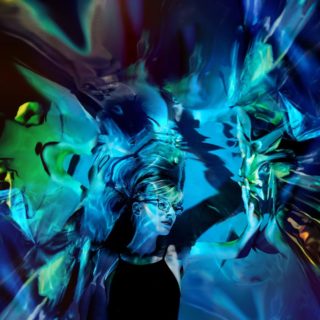Kelly Moran
Ultraviolet
(Warp)
9/10

(Warp)
9/10
Kelly Moran’s breakout second album, last year’s ‘Bloodroot’, was an exercise in restraint: everything on the record originated exclusively from the piano being plucked, struck, ebowed or otherwise tampered with in order to break away from the traditional sound of the world’s most ubiquitous musical instrument. That restraint is gleefully discarded for her follow-up and debut for Warp, as acoustic instruments nestle alongside synthetic ones to create a soundworld just as unorthodox as its predecessor but this time far broader. Moran’s established prepared piano techniques are now joined by warm, fuzzing bass washes, detuned gongs and Eno-esque swathes of ambient drone, and her sense of precise investigation is replaced by something more impressionistic, abstract and macroscopic.
That’s not to say that ‘Ultraviolet’ is a wholesale reinvention – her piano playing remains spidery and exact, and her production aesthetic continues to draw attention to every timbral detail in the music – but more of a natural growth. ‘Helix’ is the sound of Moran stretching out, revelling in newfound space to create a nagging, nervous environment of sparkling, delicate voids, like some towering, terrifyingly pure underground ice-cave. Similarly, album centrepiece ‘Nereid’ presents a dense thicket of sound, its constantly shifting and clashing modes and restless percussions evoking a humid rainforest thunderstorm, while the ripples and eddies of ‘Water Music’ refract Debussy-indebted romantic impressionism into fluid, overlapping and pleasingly complex lines.
Indeed, while little on ‘Ultraviolet’ could be described as conventional, Moran nonetheless lets that love for romantic piano music and traditional prettiness run far freer than hitherto. All seven pieces here occupy very specific emotional spaces, offering a utopian tenderness to proceedings that tempers any potential to veer into the dry, academic technicality of her avant garde training. Earlier this year, Moran told Loud And Quiet, “I like the Cageian approach, but I like applying it to different harmonic worlds, applying experimental processes to pretty music, and seeing what happens.” The result is an exotically spliced hybrid bloom of a record: thorny but soft, talkative but concise, relentlessly modernist but also welcomingly, dreamily lush.